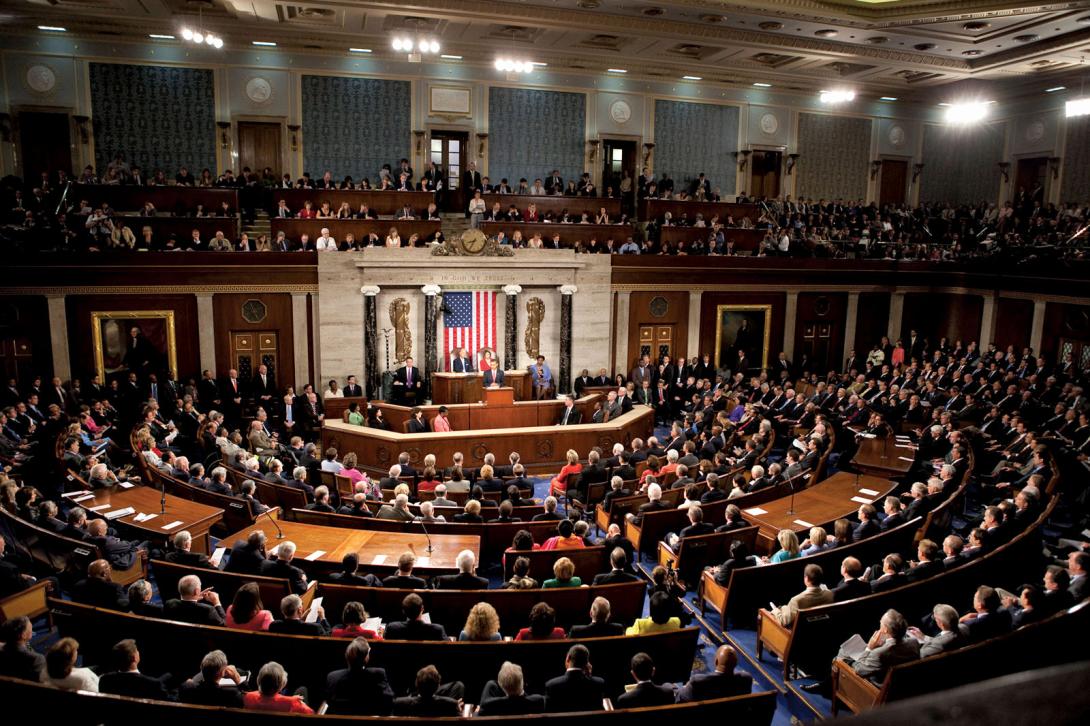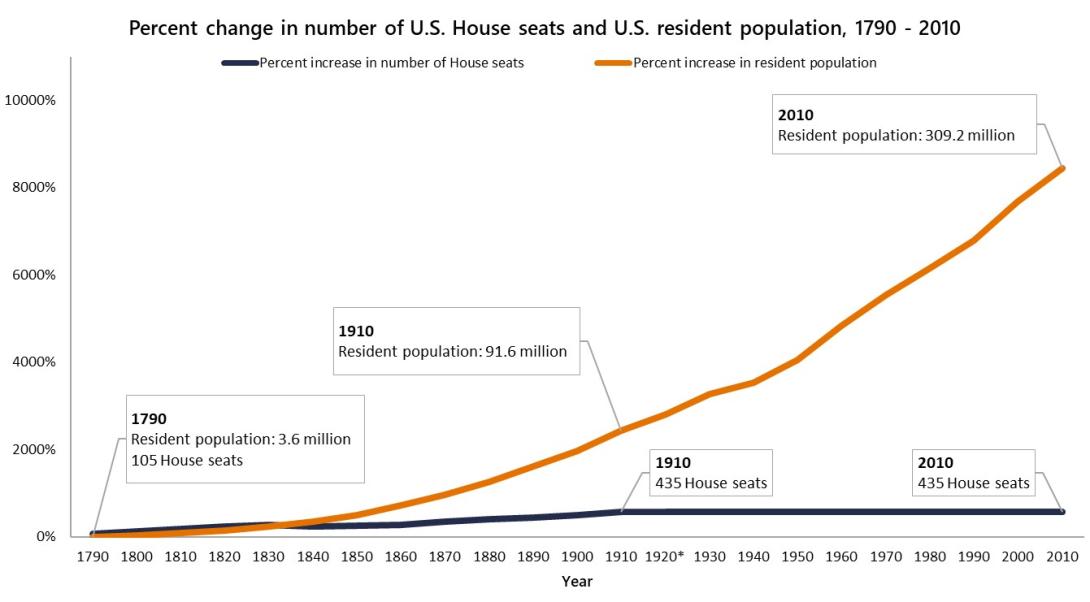Is congressional representation keeping pace with population growth?

Last year, I examined how national population growth and the cap on the size of the U.S. House of Representatives has contributed to the formation of extremely large House districts. The graph below shows how the gap between population growth and House size has widened over time. Until 1910, the size of the House expanded in response to population growth, but since 1910, the number of U.S. House seats has been frozen at 435 despite the fact that the U.S. population has more than tripled during that time.

How did we get stuck at 435?
The U.S. Constitution does not directly address whether House size should be increased with population growth or what method should be used to apportion House seats among the states. It only outlines the process of conducting a census of the U.S. population every ten years in order to establish both minimum and maximum levels of representation per state. Each state is allotted a minimum of one seat, but there can be no more than one representative for every 30,000 people. Because it’s mathematically impossible for any apportionment method to achieve absolute equality in distributing a whole number of seats among states that vary in population, political battles over the results have been inevitable.
The current freeze on House size is related to one such political battle. From 1850 to 1910, as additional states joined the Union and the United States experienced an unprecedented wave of immigration, the nation’s population increased significantly, and the size of the House size was expanded in response. The uneven distribution of the expanding population among urban and rural areas, however, fueled political resistance to increasing the size of the House among states not experiencing population growth. This political backlash ultimately resulted in Congress failing to pass reapportionment legislation following the 1920 Census and led to the passage of the 1929 Apportionment Act. This legislation established that an automatic reapportionment of the existing number of House representatives would occur after each future decennial census unless and until Congress passed a subsequent law declaring otherwise. Because there has been no such law passed, the size of the House has remained frozen at 435 members (except for a temporary increase to 437 in 1959 when Alaska and Hawaii were admitted as states).
One Person, One Vote?
One consequence of the ever-increasing size of House districts has been a growing departure from the “one-person, one-vote” rule established over time in several key court battles related to intrastate malapportionment—the practice of apportioning voting districts of unequal populations within state boundaries. In a series of cases dating from the early 1960s, the Supreme Court ruled that malapportionment within states is unconstitutional based on Article I and the equal protection clause of the Fourteenth Amendment. In White v. Weiser (1973), for example, the Court ruled that legislative districts in the State of Texas “were not as mathematically equal as reasonably possible,” even though the maximum population discrepancy among districts was only 19,275.
The magnitude of the malapportionment that has developed over time across state boundaries (interstate malapportionment) is far more dramatic than that. In 2010, for example, Montana and Wyoming each held one House seat; however, Montana’s seat represented 994,416 people, while Wyoming’s seat represented 568,300. This is a difference of 426,116 people, which is 22 times greater than the discrepancy ruled unconstitutional in White v. Weiser. A continuation of the cap on House size will only cause such discrepancies to become more extreme over time.

Ripple Effect
The Great Compromise of 1787 established that, in the House of Representatives, representation should be proportional to state population, while in the Senate, each state should be granted an equal number of votes regardless of its population. So while it was always part of the original blueprint of our governmental structure that the less populous states in the nation would have more relative power in the Senate, the framers of the U.S. Constitution also gave careful consideration to the issue of House representation and future population growth. Federalist No. 55, for example, suggests that the number of people served by each House representative should be small enough to enable representatives to stay in tune with the needs of their constituents but also large enough to avoid having a House so big it would not function properly.
By preventing the House from growing at all in conjunction with U.S. population growth, hundreds of millions of people incorporated into the U.S. population since 1910 have gained no additional political power in Congress as individuals relative to the state-based power of the Senate. Additionally, because the composition of Congress is reflected in the Electoral College, the imbalance of population- versus state-based political representation caused by a cap on House size gets magnified in a ripple effect to the executive and judicial branches in the form of presidential elections and judicial appointments. Given all of these considerations in light of the nation’s projected population growth, is it time that Americans consider getting a bigger House?


